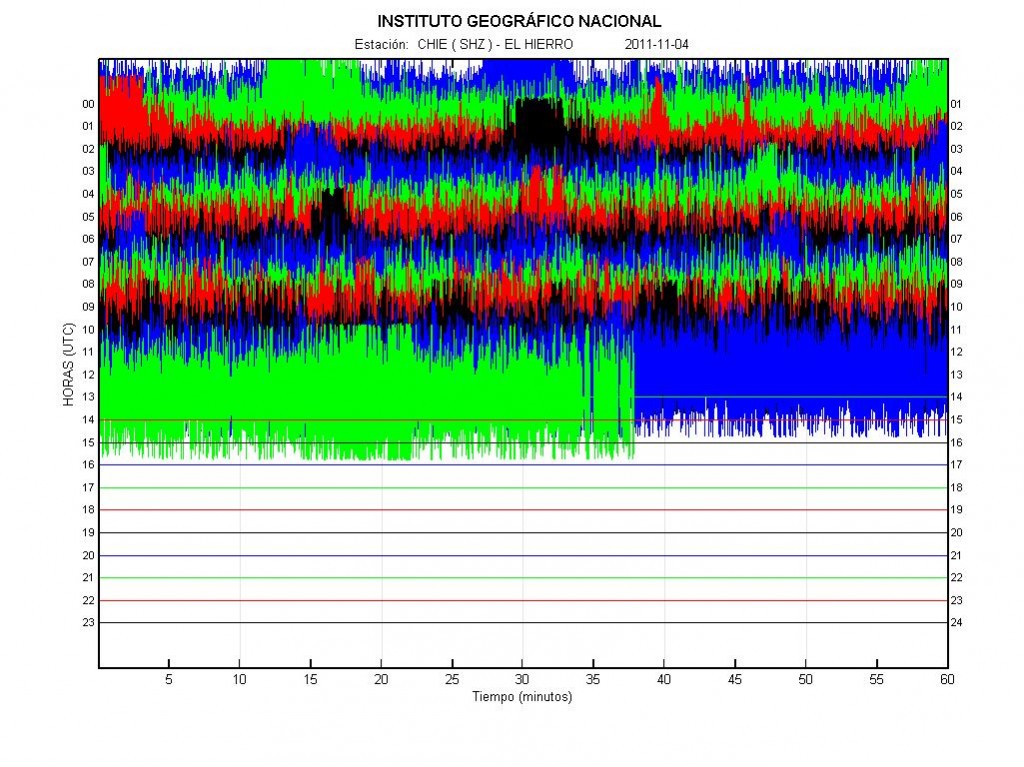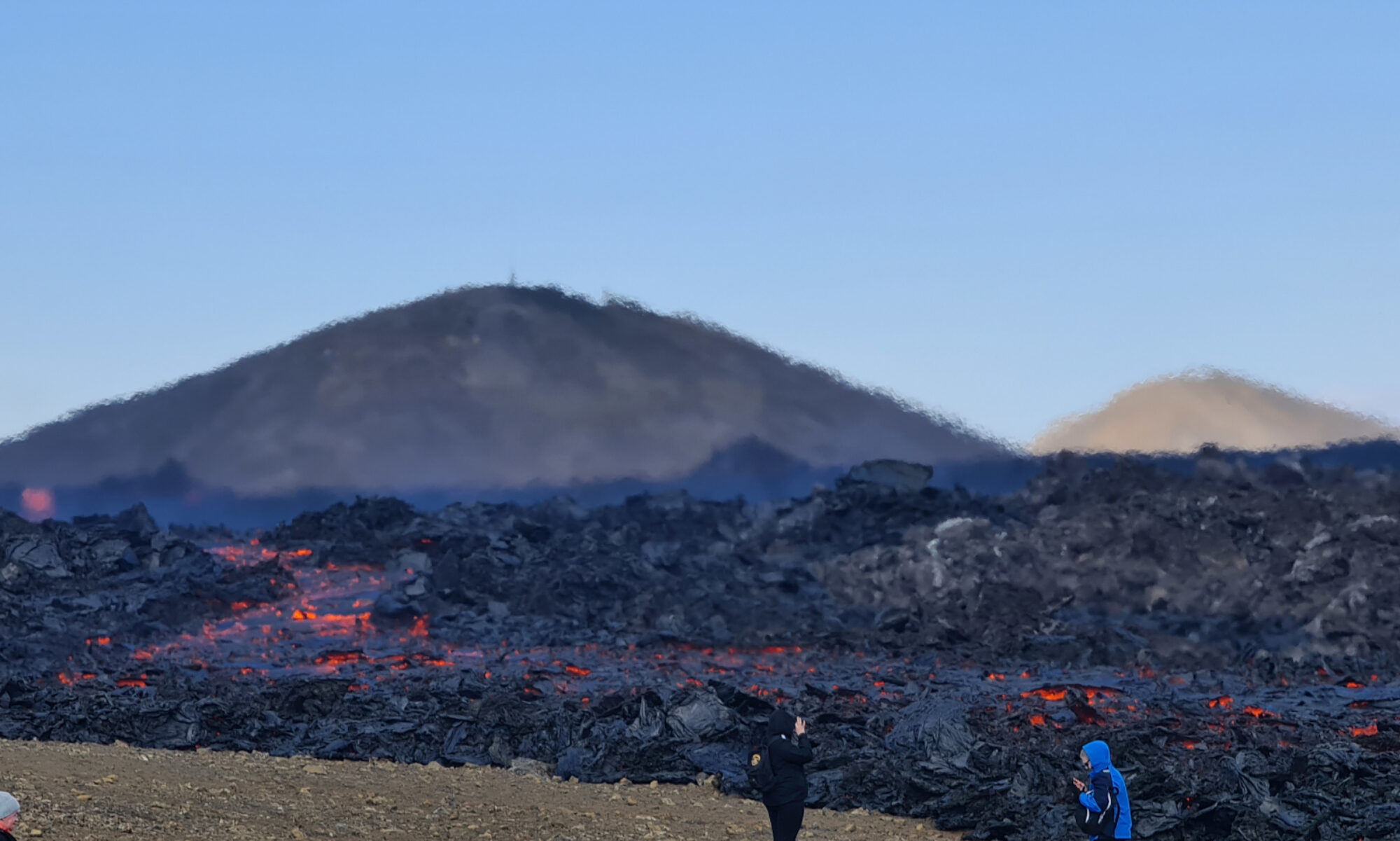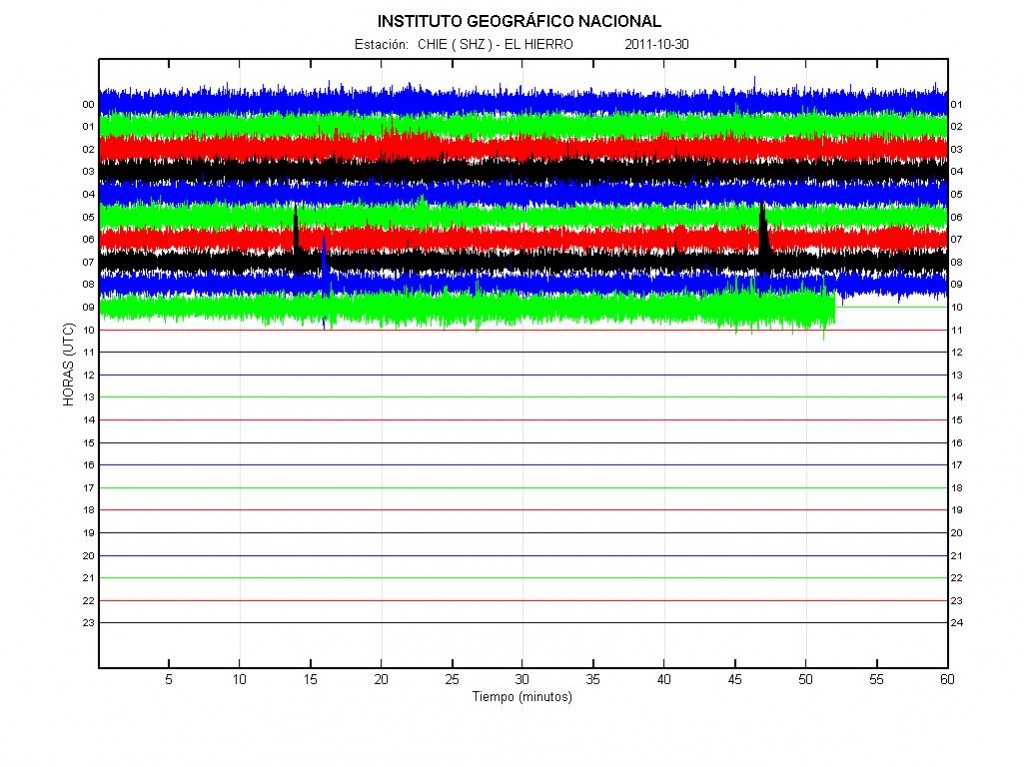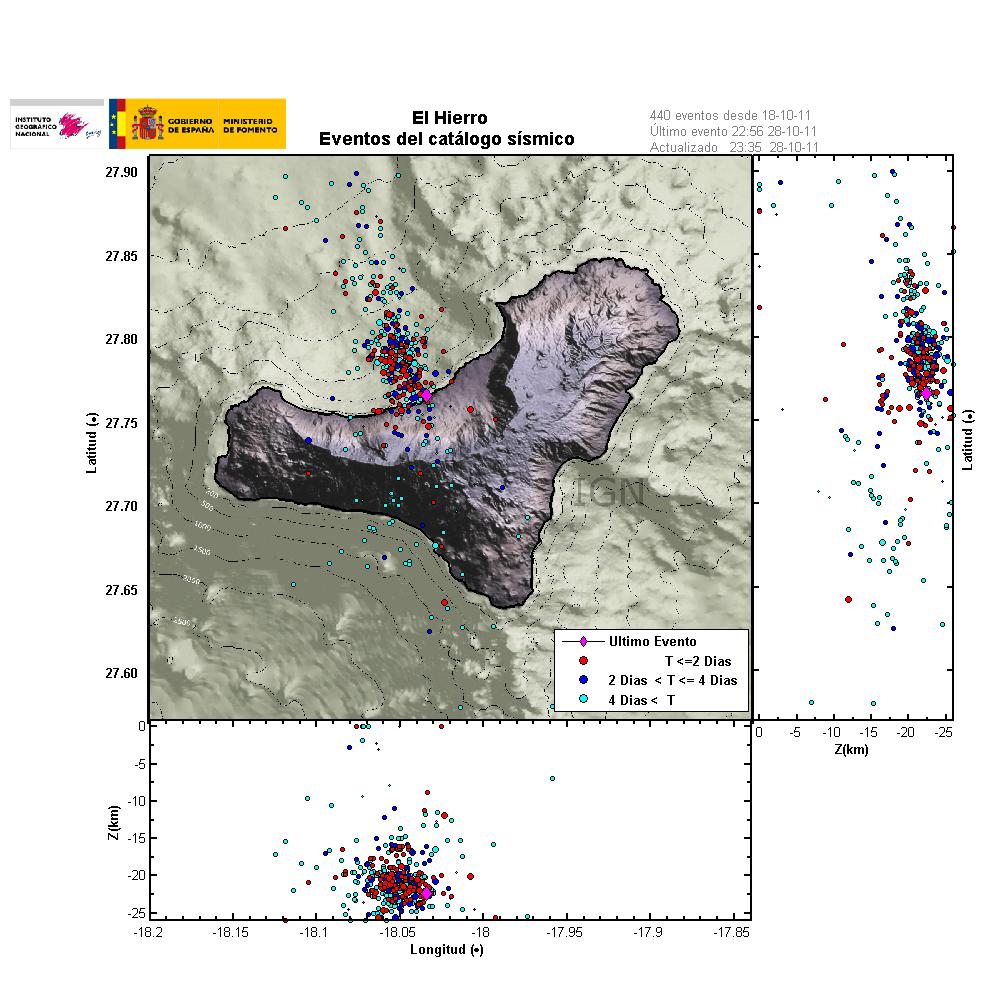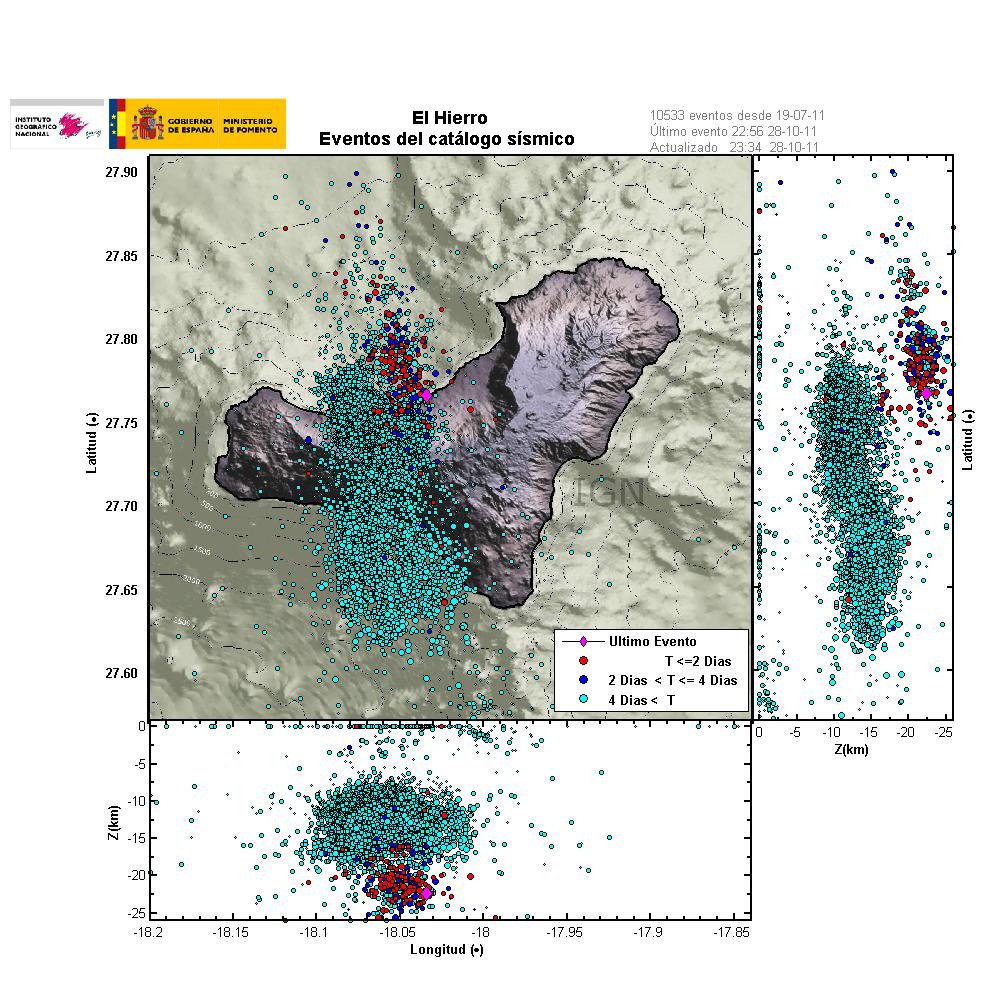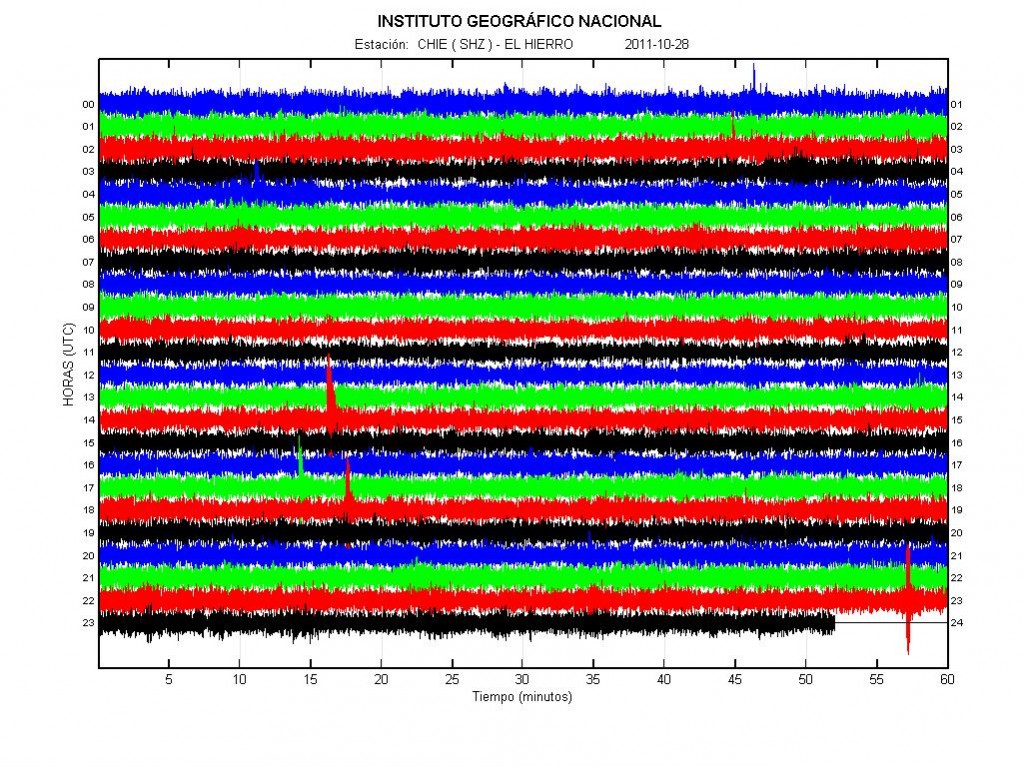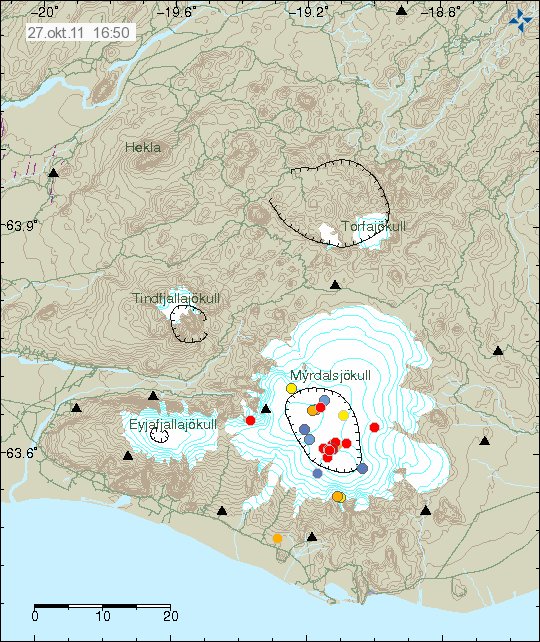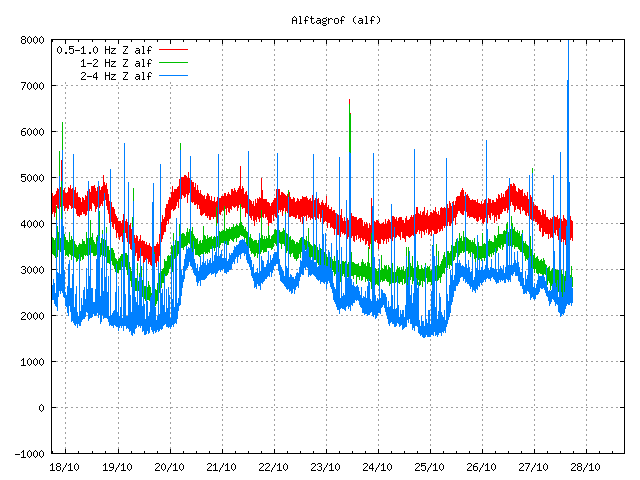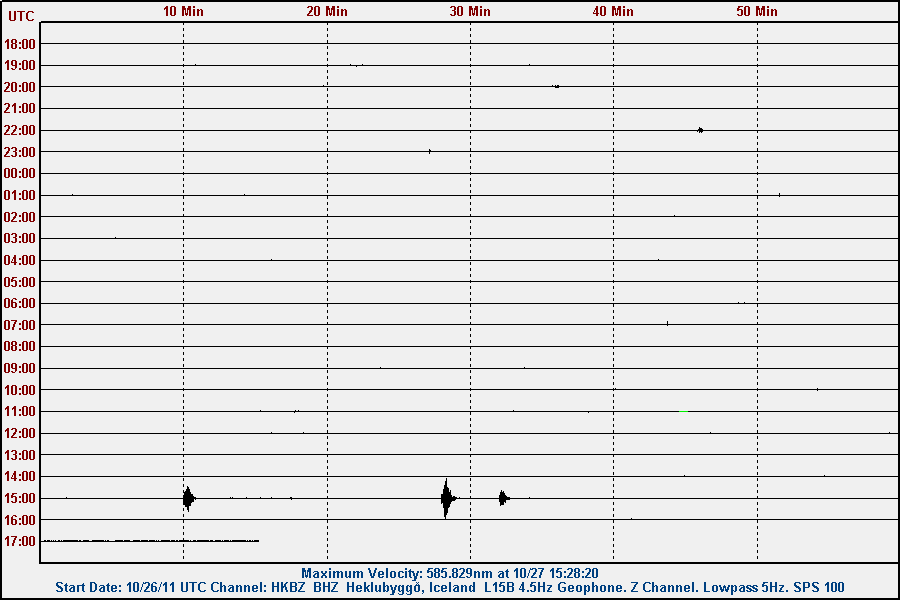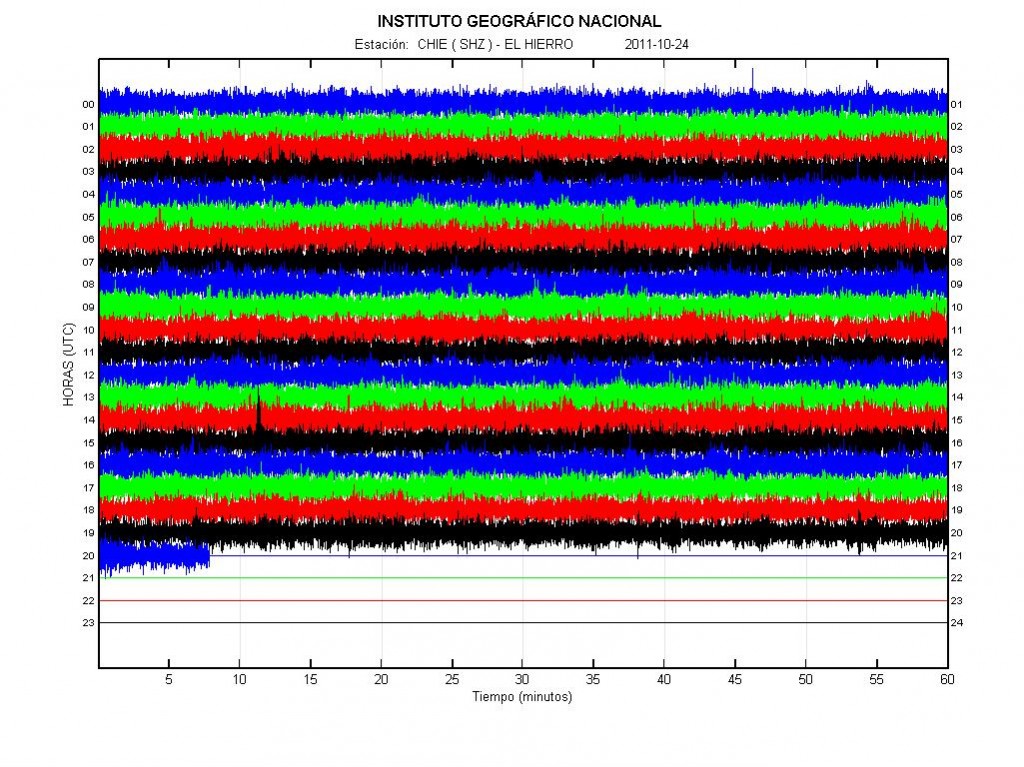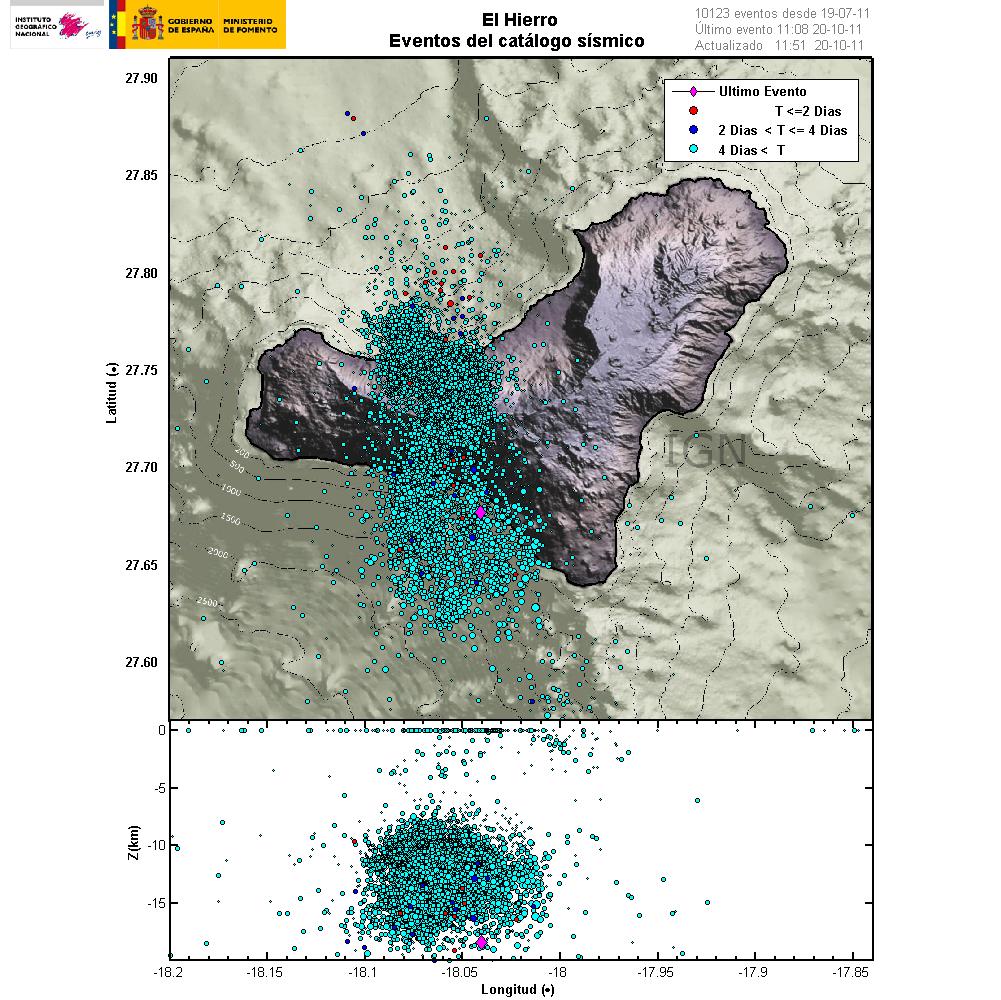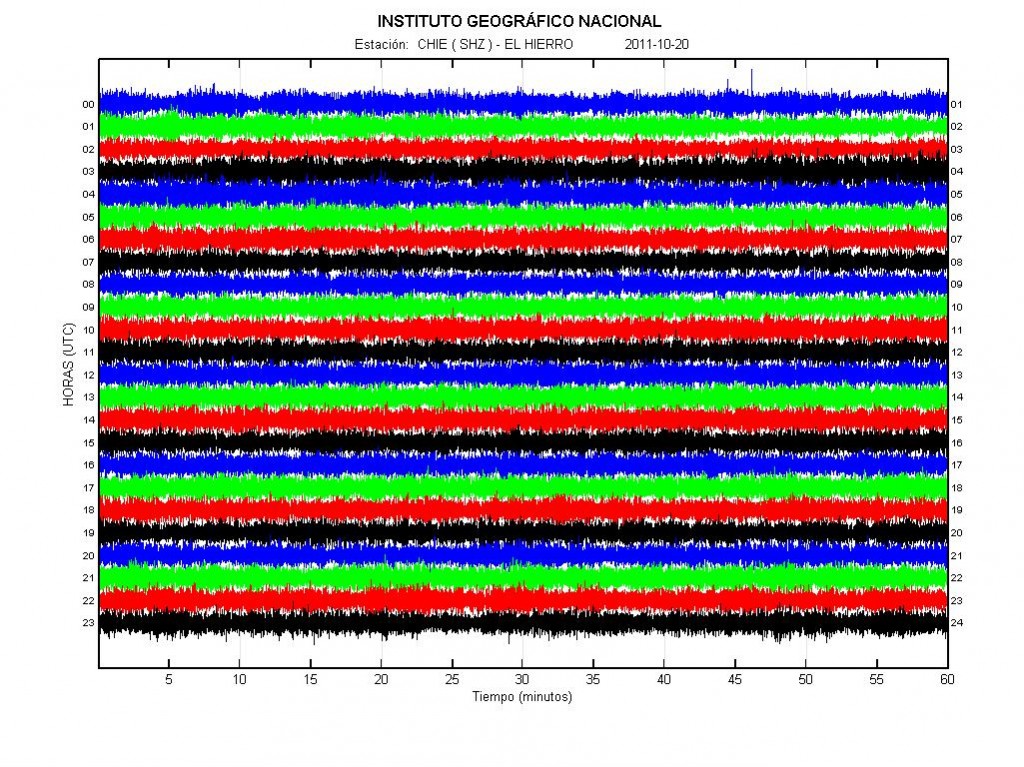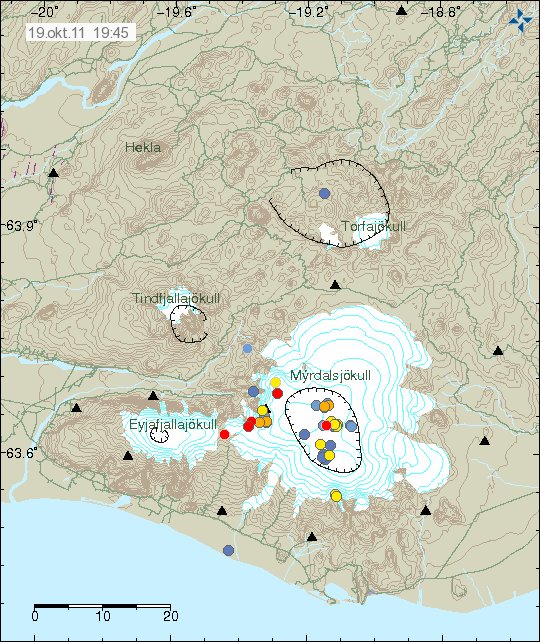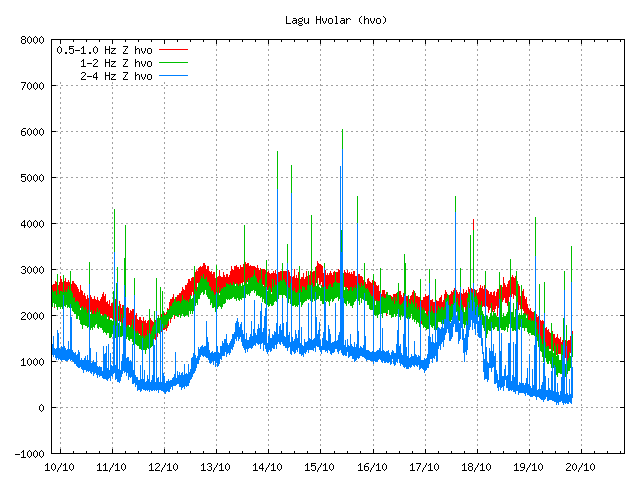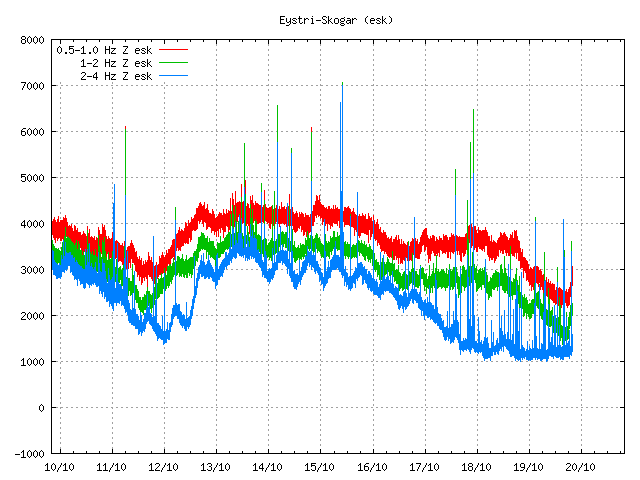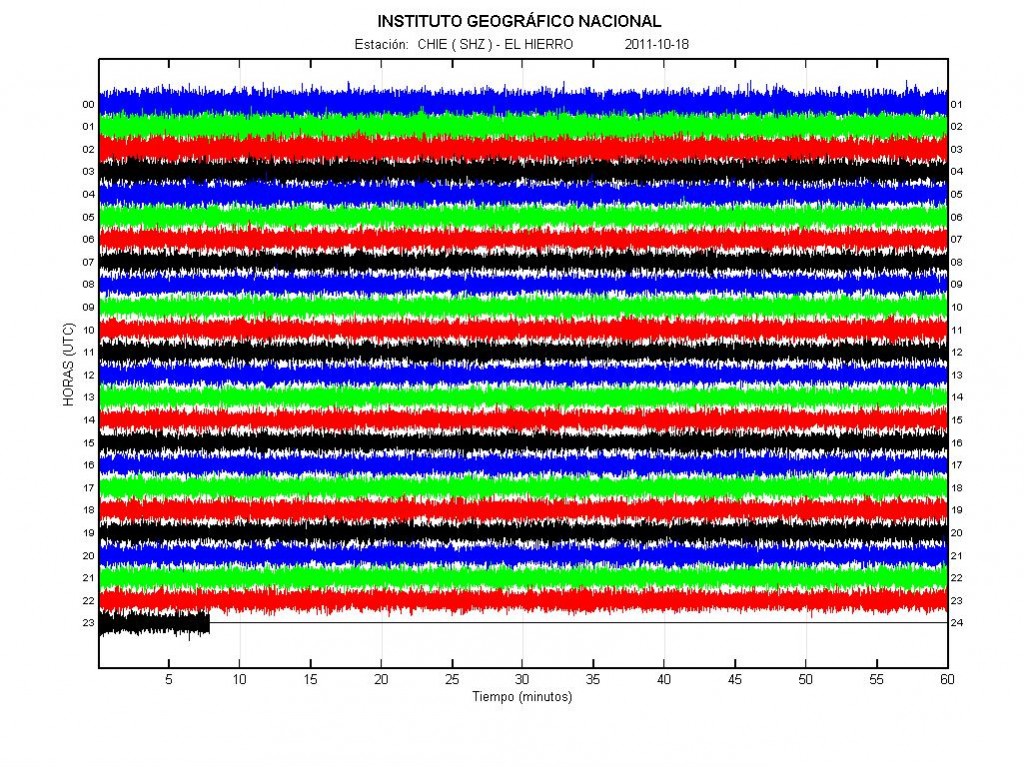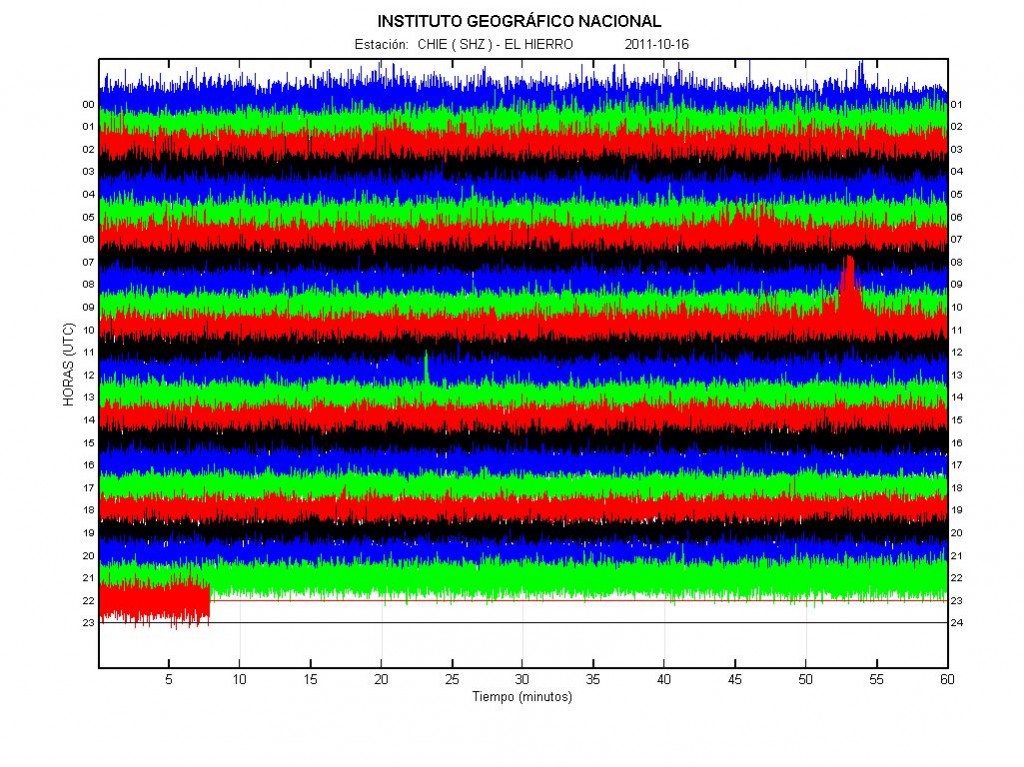I was going to post this yesterday. But I fell a sleep at 17:00 UTC and I didn’t wake up until 03:00 UTC.
*******
The eruption in El Hierro volcano continues as it has been doing for past few weeks with little change. The first eruption vent that did open south of El Hierro Island has continued to erupt. But so far no Island has formed and it is unclear if it is going to form, as the depth is great in this area. Since yesterday around 06:00 UTC the harmonic tremor has been increasing. But this suggests that new vents have opened up in the south eruption area. I got some pictures of that yesterday in the email. But they did not show anything new in my view. Thanks to the readers how did send me those pictures.
The current fluctuation in the harmonic tremor from El Hierro suggests that magma is on the move in the north part of El Hierro Island. Both off the coast and maybe inland on the Island where earthquakes have been taking place. It is impossible to know how this is going to develop during the next few hours to days. As that depends on the rock structure of El Hierro Island and earlier eruptions.
Earthquake activity
During the past two weeks the earthquake activity have been growing in the North-west part of El Hierro Island. The reason why this is happening is that a new fissure is about to open in this area. As I have mentioned before in earlier blog posts. When and where is impossible to know for sure. The largest earthquake so far took place this morning, it size was ML4.0 with the depth of 20 km. But this is the automatic data from IGN. This pattern of earthquake activity is most likely going to continue during this eruption process in El Hierro volcano. Since the eruption type here is a fissure eruption.
It is worth noting that earthquakes in once place does not mean that the eruption is going to happen in that place. As the magma can travel in dikes all over the El Hierro Island and show it self anywhere on the Island it self. So the general risk is high in my opinion. The only action that can be taken is to be prepared for sudden eruption of new vents on El Hierro Island. Since there is a good amount of magma on the move inside El Hierro volcano.
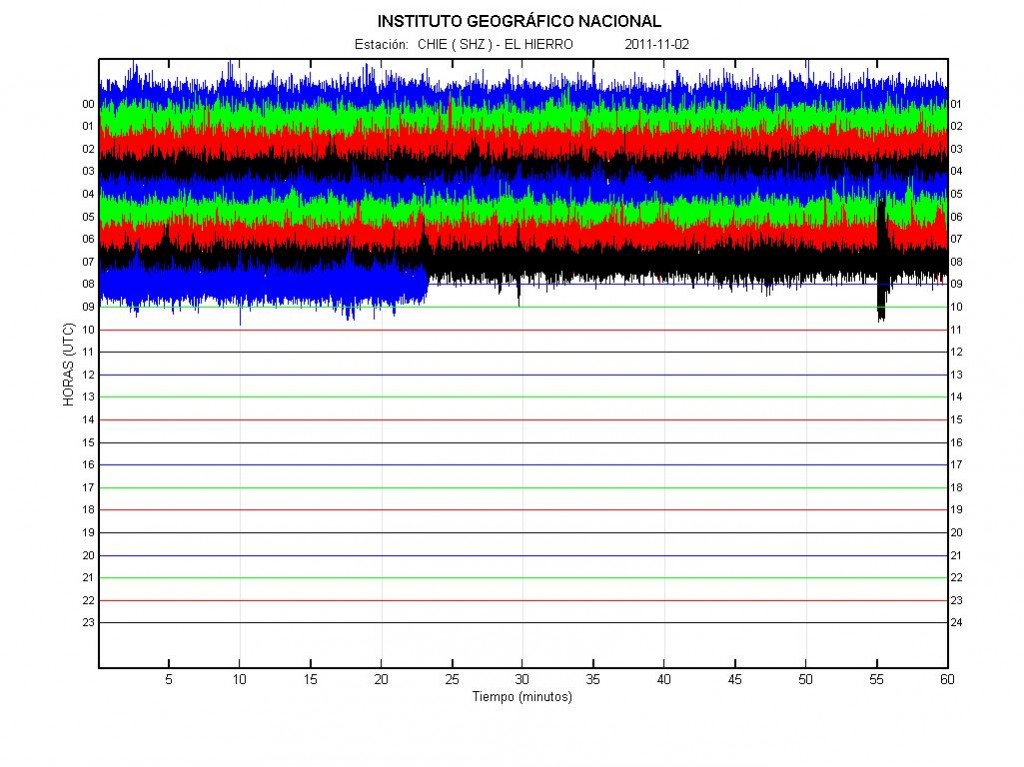
The harmonic tremor in El Hierro at 08:54 UTC (when picture is saved). The spikes are earthquakes, and harmonic tremor spikes are the “waves” in the harmonic tremor pattern. Copyright of this picture belongs to Instituto Geográfico Nacional.
Update 1:
* When I wrote this blog post. This two earthquakes took place.
1109584 02/11/2011 08:37:11 27.9267 -18.1084 3 1.7 mbLg NW FRONTERA.IHI
1109582 02/11/2011 08:36:00 27.5986 -17.9594 1 1.9 mbLg S EL PINAR.IHI
This are the most shallow earthquakes that I have seen so far. From the depth it is possible a magma has found a clean path to surface in this two areas. Sadly there is no map. So I am not sure where this earthquakes took place in El Hierro volcano.
Update 1b: The earthquake have been revised. Now the depth is 9 km for the ML1.7 and 22km for the ML1.9.
The shallow earthquake.
1109584 02/11/2011 08:37:11 27.9304 -18.1107 9 1.7 mbLg NW FRONTERA.IHI [+]
I am going to post more information when I know more on what is taking place in El Hierro.
Blog post updated at 11:24 UTC on 2 November, 2011
